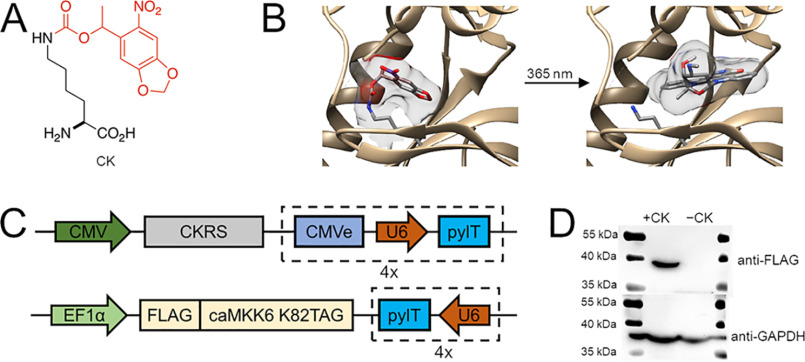Figure 1.
Construction of genetically encoded caged MKK6. A, structure of the photocaged lysine (CK), with the light-removable caging group shown in red. B, caging of Lys82 in MKK6 blocks the ATP-binding site until the caging group is removed through UV exposure, restoring the native, constitutively active kinase (Protein Data Bank entry 3FME). C, two-plasmid system to express caged MKK6 in mammalian cells. The TAG mutation is introduced at the Lys82 position of MKK6. Two other mutations (S207E and T211E) transform the kinase into a constitutively active form. pylRS for CK (CKRS) is driven by a CMV promoter, and FLAG-caMKK6 K82TAG is driven by an EF1α promoter. U6, an RNA polymerase III promoter, controls the expression of pylT on both plasmids in the form of four (4×) repetitive cassettes. CMVe (CMV 5′ enhancer fragment) is coupled with each U6 promoter on one of the plasmids for higher pylT yield. D, Western blotting shows CK-dependent expression of caged MKK6 in HEK 293T cells.

